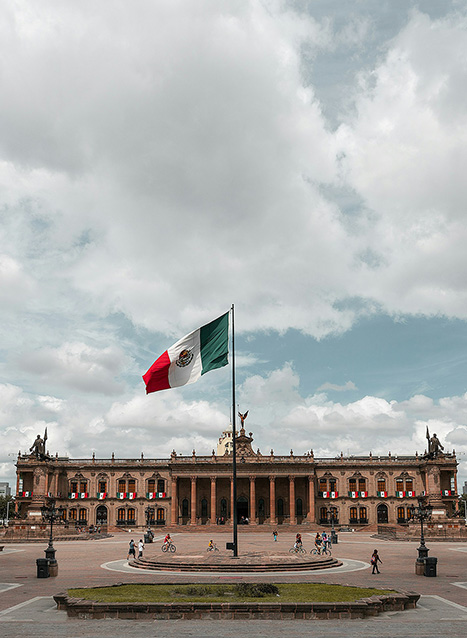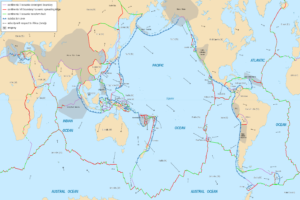Evacuations from High-Risk Locations Call +44 (0)1202 308810 or Contact Us →

7.1 Magnitude Earthquake Strikes Mexico – Environmental Risks
20 Sep 2017
At about 1315 local time on 19 September 2017, a magnitude 7.1 earthquake struck the Puebla area of Mexico at a depth of 51km, about 150km from Mexico City. At present, its level of has not been fully ascertained but what can be confirmed is that dozens of buildings in Mexico’s capital have been toppled and more than 200 people are confirmed dead; this fatality rate is expected to rise. In total, buildings at 44 different locations had been impacted in some way. One of the buildings to collapse was a school with 20 children confirmed dead and 30 others still missing.
Key Points
- A magnitude 7.1 earthquake has struck central Mexico, toppling dozens of buildings in the capital Mexico City.
- The current fatality rate is above 200 people.
- This latest earthquake comes less than two weeks after a magnitude 8.1 earthquake struck off the coast of the state of Chiapas.
Situational Summary
Environmental: At about 1315 local time on 19 September 2017, a magnitude 7.1 earthquake struck the Puebla area of Mexico at a depth of 51km, about 150km from Mexico City. At present, its level of has not been fully ascertained but what can be confirmed is that dozens of buildings in Mexico’s capital have been toppled and more than 200 people are confirmed dead; this fatality rate is expected to rise. In total, buildings at 44 different locations had been impacted in some way. One of the buildings to collapse was a school with 20 children confirmed dead and 30 others still missing.
Those in Mexico City have been advised not to smoke on the street as gas mains may have been significantly damaged. About two million have been left without electricity or phone lines.
This quake came after many people in Mexico City had taken part in an earthquake drill on the anniversary of the 1985 magnitude 8.0 earthquake which killed 10,000 and injured more than three times that number. The military have been drafted in to help with the response.
Solace Global Comment
This earthquake comes less than two weeks after a magnitude 8.1 earthquake struck off the coast of Chiapas, close to the Mexico-Guatemala border. This was the strongest quake to hit the country since 1787 (according to estimates) and led to deaths of nearly 100 people and injured more than 300; a total of 1.5 million were impacted in some way. A tsunami warning was almost immediately issued for countries across the Pacific Ocean (including as far away as New Zealand), with waves of 1.75 metres recorded in Chiapas. More than 1,000 aftershocks were also registered, the strongest of which measured 6.1 on the Richter Scale. The earthquake was felt as far away as the capitals of Mexico and Guatemala. In Mexico City, a bridge under construction collapsed. These two earthquakes are not thought to be linked.
Mexico sits on a fault line in a highly active seismic zone known as the Pacific Ocean ‘Ring of Fire’. It is estimated that 90 per cent of all of the world’s earthquakes occur in this area. It is estimated that as many 500,000 earthquakes occur every year with 100,000 able to be felt by humans. In certain places, minor earthquakes occur almost constantly. Most earthquakes are natural occurrences but human development has had an impact. The construction of dams and the impact of fracking for gas are thought to cause earthquakes or at least increase their impact. It has been estimated that on average, there are 18 major earthquakes every year (those registering 7.0-7.9 on the Richter scale) and one great earthquake (those register 8.0 and above). Unlike volcanoes or tropical storms, scientists have found it impossible, at this point, to predict when an earthquake will occur. Mexico itself has experienced at least 19 earthquakes of 6.5 magnitude or over within 250km of this latest earthquake in the last century.

Map: Global tectonic plates
SECURITY ADVICE
EnvironmentHighWhat to Expect:
Small to Moderate Earthquakes
Seismic movements which are lower on the Richter Scale can occur across the world, including in places like the United Kingdom, which is not on or near any tectonic plates. These earthquakes do not represent an emergency risk. When such quakes occur, you can expect:
Large Earthquakes
The impact on larger earthquakes, which includes everything from 5.0 on the Richter Scale, largely depends on where they occur and at what depth. Their impact may be felt for several minutes. However, in general when they do occur, you can expect the following.
If you are inside:
The first thing to do when feeling an earthquake tremor is to drop to your hands and knees so the earthquake does not knock you down. You should then cover your head and neck with your arms as protection from falling debris.
You should then look for cover, if you can move safely; a sturdy table is suitable, hold on to the legs so that it stays over you to offer protection from falling objects. If this is not available, crawl away from outside walls and next to inside walls away from windows or any fixtures or furniture which could fall on you. Remember: âdrop, cover, and hold onâ
If you are in bed when the earthquake occurs you should stay in bed and cover your head and neck with a pillow unless there is something overhead that could fall on you and cause injury. At night, it is difficult to see any hazards or debris which have emerged and attempting movement in the darkness may result in further injuries.
If you are in a lift get off at the next available floor and find cover.
Stay inside, do not rush to get outside and await the end of the tremors.
If you are outside:
If you are outside when shaking occurs, get to open space away from buildings, street lights, bridges/flyovers and overhead wires. Once in the open, you should âdrop, cover, and hold onâ. Then await the end of tremors.
If you are in a moving vehicle:
If driving when tremors begin, stop as quickly and safely as you can and apply the handbrake. Be aware of areas of potential landslides. Avoid stopping near buildings, trees, bridges, overpasses, and overhead wires. Once the earthquake tremors cease, proceed cautiously, avoid roads, bridges, and other infrastructure which may have been damaged by the earthquake.
If you are trapped:
If the worse happens and you become trapped it is important to remain calm and not move about or kick up dust. If you have a phone, try to use it to call for help. If possible, try tapping on a pipe or use a whistle so rescuers can locate you. Shouting should be a final measure taken as it is important to not inhale too much dust and debris.
If you are not trapped when tremors stop:
When shaking stops, leave the building if it is safe to do so and get to an open space away from any damaged areas.
If the building is undamaged, check for the smell of gas, turn it off at the main valve. If wiring is damaged turn that off at the main switch board. Check for fires and evacuate the building if they are many or too large to safely extinguish.
Monitor local media through any means for information and instruction.
Check for any injuries and give treatment (provided you are trained to do so). Then assist with rescues if it is safe to do so.
Be prepared for a tsunami in coastal areas, learn if the area you are in is usually impacted by post-earthquake tsunamis. A strong earthquake that lasts more than 20 seconds in a tsunami zone will mean evacuation is imperative. If this is the case, once shaking has stopped, move inland and to higher ground immediately and continue to monitor for local instruction or evacuations. If you can see the waves you are still too close. Remain on high ground, tsunami waves can last up to eight hours or longer, only return when officials say it is safe to do so.
Maintain extreme caution in post-earthquake clean-up. Do not remove heavy debris alone and remember to use appropriate clothing and tools.
Be ready for aftershocks and be prepared to âdrop, cover, and hold onâ, should they occur.
Most earthquake-related injuries are caused by collapsing walls, objects falling, or glass shattering, rather than ground vibrations directly causing injury.
Travellers are advised to delay all non-essential journeys to Mexico due to the damage done to infrastructure, the likelihood of severe travel disruptions, and the threat of significant aftershock. For those in Mexico, it is strongly advised to follow the advice of local officials as rescue and rebuilding work takes place. It is advisable that offices and other buildings in Mexico undergo detailed security assessments to include a seismic risk assessment. An earthquake plan should be put into place and all staff trained in what to do should one occur. It should also be noted that building foundations may be damaged by this most recent quake and any further significant seismic activity may cause deadly infrastructural impairment.
For most travel to Mexico, including Mexico City, Solace Global would advised clients to employ the minimum of an airport meet and greet and a security-trained driver for all travel. It is advisable that this level of security is increased for other areas of the country, including the dangerous Mexico-US border region. Travellers are also advised to use travel-tracking technology with an intelligence feed. This should enable a traveller to be alerted of any security updates within their vicinity, and to update others of their movements in case of an emergency.